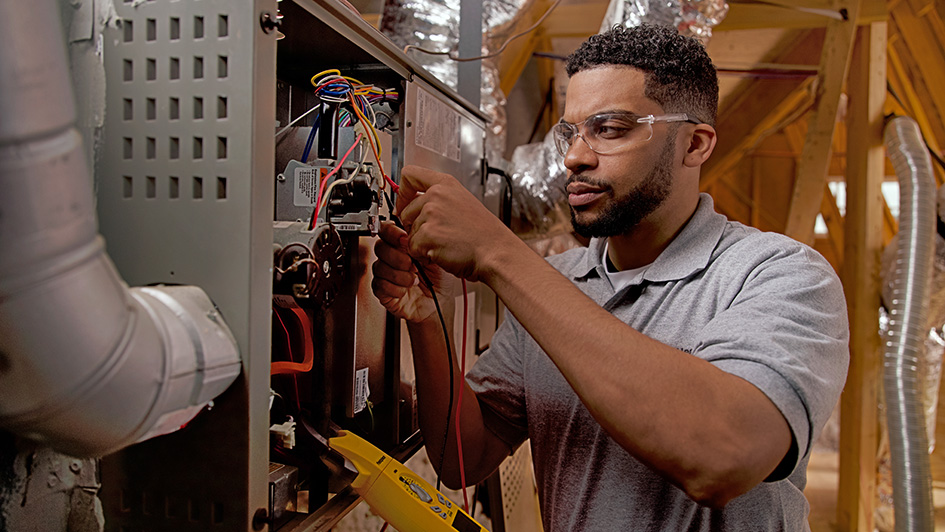
A furnace is usually a background player in your home, helping keep you warm in the cold winter months. It often won't be noticed until something goes wrong.
One source could be that your furnace has a cracked heat exchanger. It can be a safety risk, so it’s critical to familiarize yourself with the symptoms of a cracked heat exchanger and what you should do if you believe that is the problem.
What Is a Heat Exchanger in a Furnace?
A heat exchanger transfers heat from the combustion chamber inside your furnace to the air that flows inside the air ducts. It typically handles this using coils or tubes that heat up the air while serving as a barrier to keep gas produced in the combustion chamber, called flue gasses, from leaking out into your home.
Is a Cracked Heat Exchanger Dangerous?
Given its important role, it shouldn't come as a surprise that a cracked heat exchanger can be hazardous. A crack in the heat exchanger can allow dangerous gasses – like carbon monoxide, which can be lethal – to flow across your home.
For obvious reasons, don't ever use your furnace if you think you're dealing with a cracked heat exchanger, as this could make the entire family ill. Contact an HVAC professional immediately if you believe your heating has a cracked heat exchanger that needs to be repaired.
Four Warning Signs of a Cracked Heat Exchanger:
- Furnace turns off: A cracked heat exchanger can cause your furnace to turn off.
- Strange Smells: If the air escaping your furnace has a strong chemical odor, it may be a sign gas is slipping through cracks in your heat exchanger. These byproducts, which may smell like formaldehyde, are a major warning sign.
- Carbon monoxide alarm goes off or you notice poisoning symptoms: If a cracked heat exchanger is emitting carbon monoxide into your home, your carbon monoxide alarm should go off or household members could experience signs of carbon monoxide poisoning. Side effects include headaches, dizziness, weakness, nausea, vomiting or feeling sleepy. If the alarm goes off or you feel unwell, leave the home right away and then call for help.
- Soot: If you notice black sooty buildup near the exterior of your furnace, it’s another sign something may be seriously wrong.
What You Can Do if a Furnace Heat Exchanger is Cracked
If you suspect your furnace has a cracked heat exchanger, call a pro with extensive experience in furnace installation Crown Point right away so they can take a look at your system and, if required, start a furnace heat exchanger replacement. Costs often vary depending on the situation, but estimates run in the neighborhood of $1,000 to $3,000.
Estimates aside, the good news is that heat exchangers are regularly included in the warranty. You’ll want to review the warranty paperwork on your furnace, because while the warranty won't always cover the entire cost of repairs, it could significantly shrink your bill.
How to Avoid a Cracked Heat Exchanger in Your Home
One of the easiest ways to avoid problems in your furnace overall is via routine furnace maintenance. Furnaces offer the most benefits when they work efficiently. Hiring a trained professional to examine your furnace for old parts, clogged filters and other potential problems can help you avoid getting a big bill later on.
It’s also beneficial to inspect your furnace filters every few months – it’s encouraged some filters be swapped out every 90 days or sooner if they are dirty or grimy. While the filters are not part of the heat exchanger itself, the strain of pulling air through a clogged filter makes your entire furnace work longer to do its job. And the harder your furnace needs to run, the more strain components like the heat exchanger will experience.
